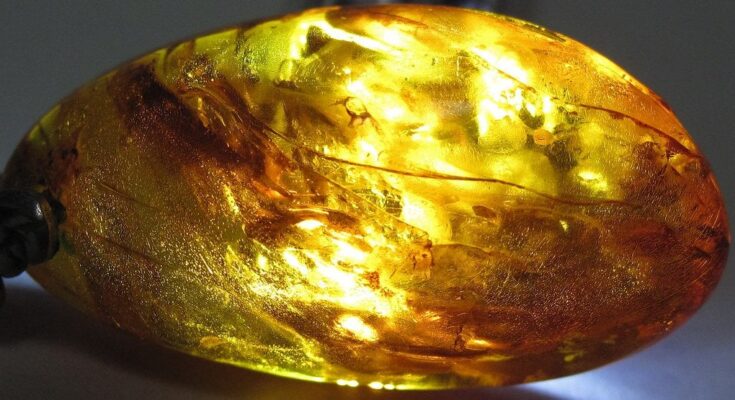
Amber, a hardened tree resin, was highly valued by the ancient Mycenaeans, one of Greece’s earliest civilizations. It symbolized the sun and power, making it a prized material among the upper class from 1750 to 1050 BC, the last phase of the Bronze Age.
Professor Janusz Czebreszuk, the director of the Polish Archaeological Institute in Athens, explored the connection between amber and power.
Mycenaean’s use of amber in jewelry
The Mycenaeans, known for their grand palaces, organized cities, and unique writing system, used amber in jewelry such as necklaces and chest ornaments. These were often buried with the elite in their graves.
Research shows that much of the amber found in these graves came from the Baltic region, specifically near the Bay of Gdańsk, a key hub for amber trade. This is evidence that the Mycenaeans were part of a broad trade network, connecting them with distant lands and other wealthy societies across Europe.
Czebreszuk explains that amber likely reached Greece as the Mycenaeans migrated south, possibly from regions such as Macedonia or Epirus. They brought with them religious and cultural beliefs tied to amber’s symbolism of the sun.
In Central Europe, ancient artifacts with sun-like patterns show amber’s connection to solar power, beliefs that continued in Greece.
Amber in Greek mythology
Amber’s value was also tied to Greek mythology. The story of Phaëton, son of Helios, the sun god, tells of his sisters’ tears turning into amber after his tragic death. This mythology reinforced the idea that possessing amber was like holding a piece of the sun.
Mycenaean elites used this belief to legitimize their power, with amber symbolizing their divine connection and elevated status.
Extensive amber trade
Strong social networks support the extensive trade of amber across Bronze Age Europe. This was often solidified through interregional marriages, according to genetic studies.
Amber circulated widely, from the British Isles to Ukraine, forming part of a larger system of exchange. The Gulf of Gdańsk recognized as a major amber trading center even in ancient times, played a crucial role in this network.
The Polish Archaeological Institute in Athens, established in 2019, enables researchers to study artifacts like amber. This helps to better understand ancient production methods, cultural exchanges, and material significance.
“We can determine where the find originated, where the workshop was, and what knowledge the producer had,” says Czebreszuk. By examining different types of fossil resin, such as succinite, researchers learn not only about Mycenaean elites but also about the vast networks that helped spread amber across Europe.



